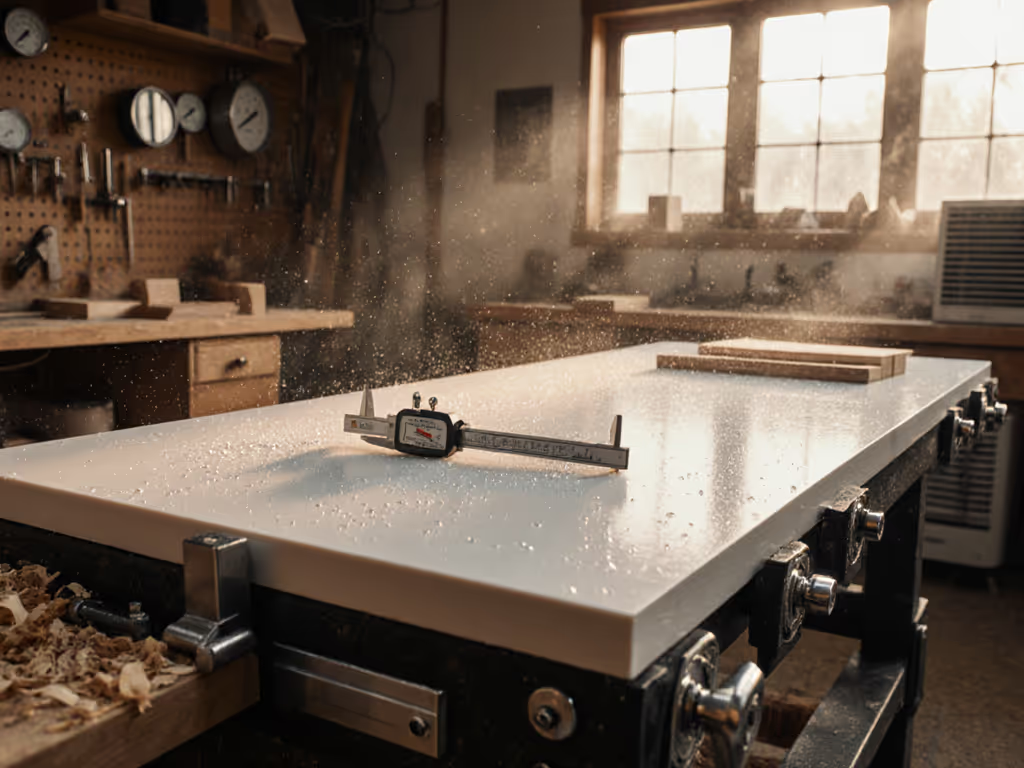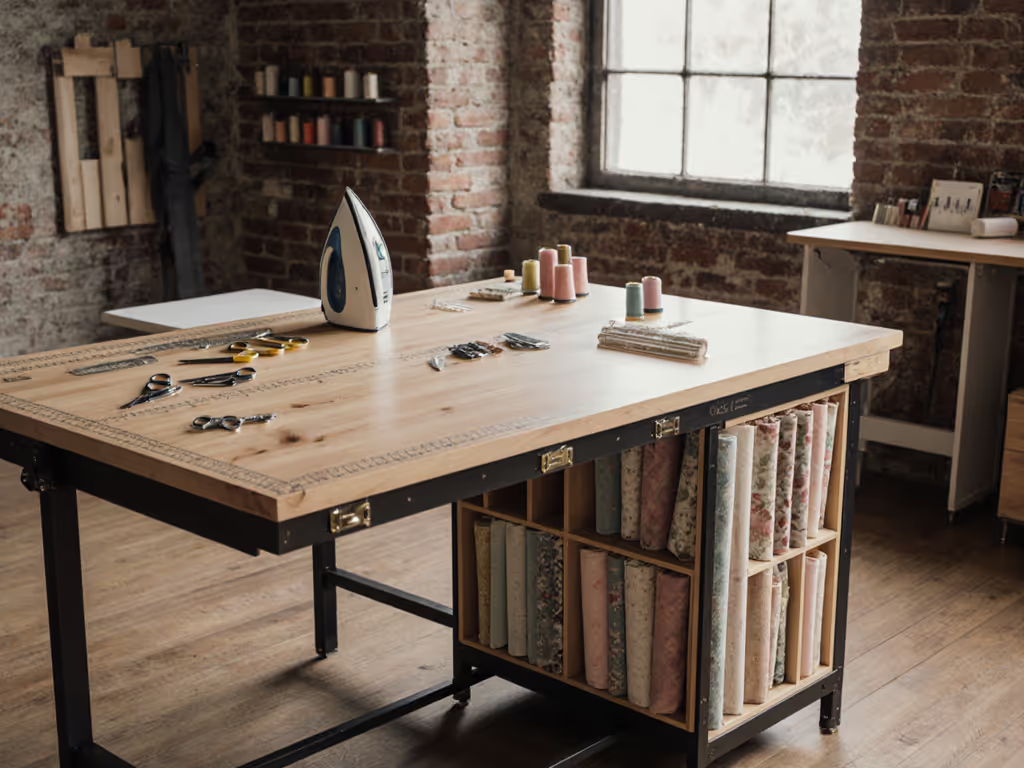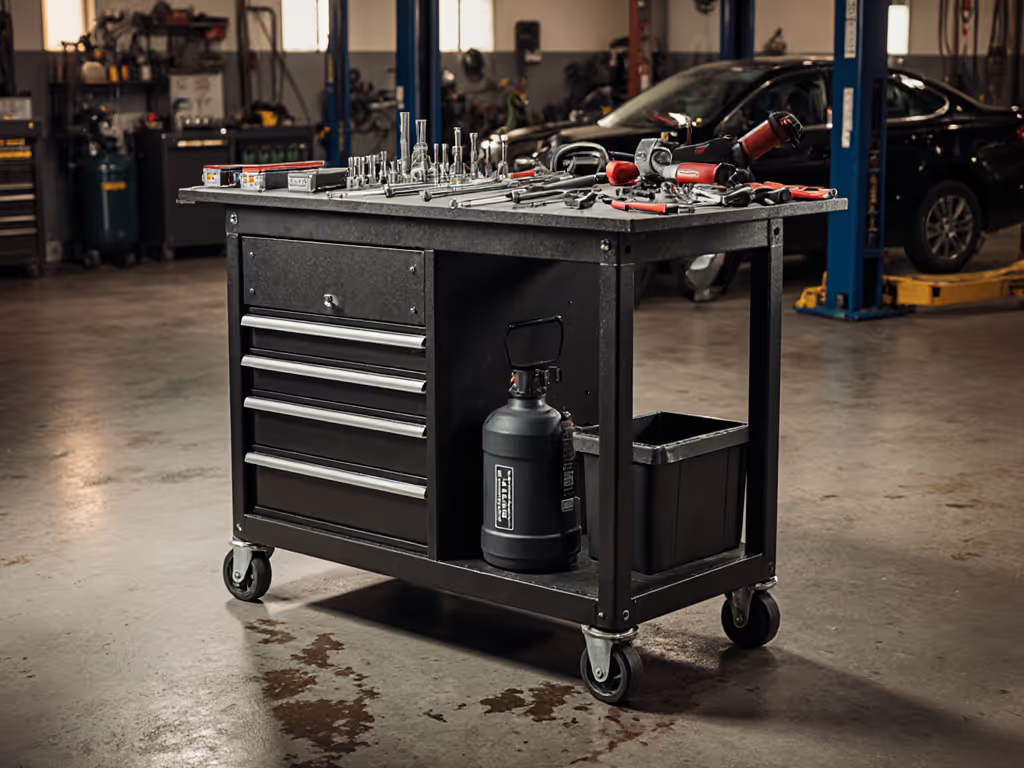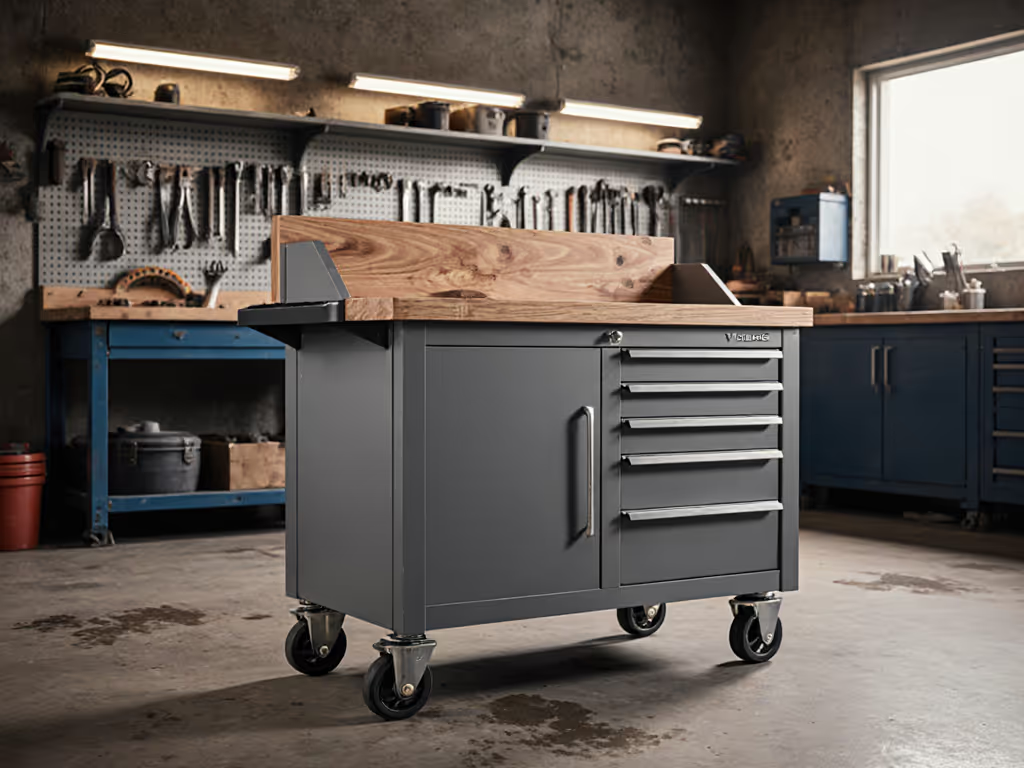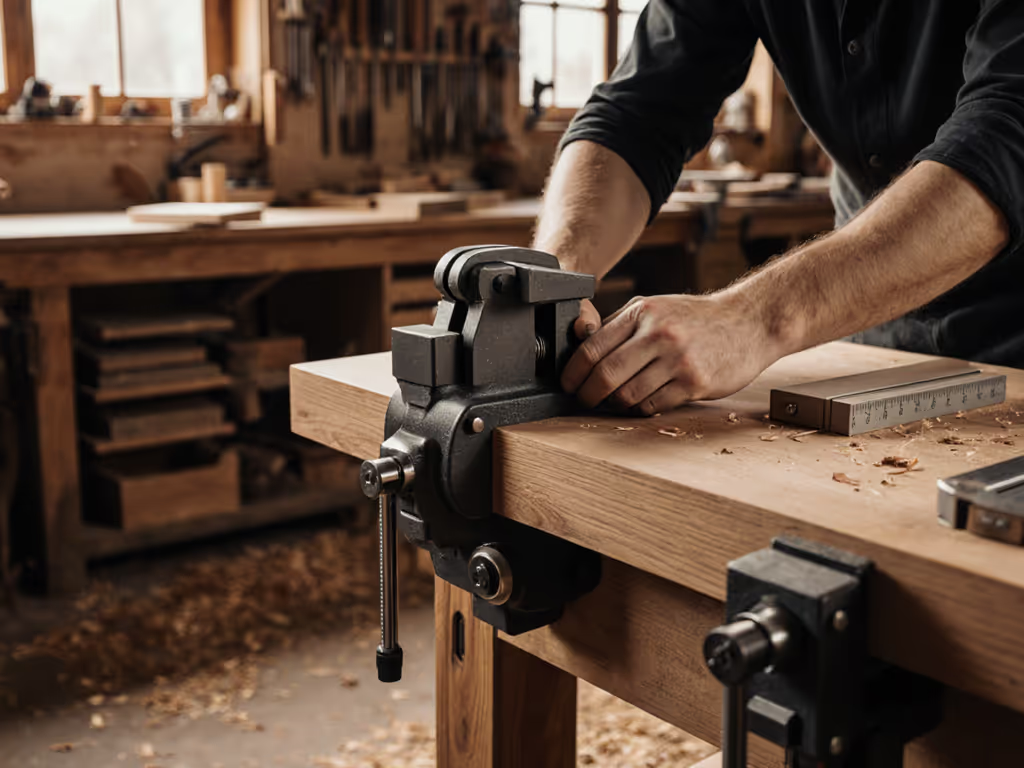
Childrens Wooden Workbench: Age-Adjustable Safety Guide
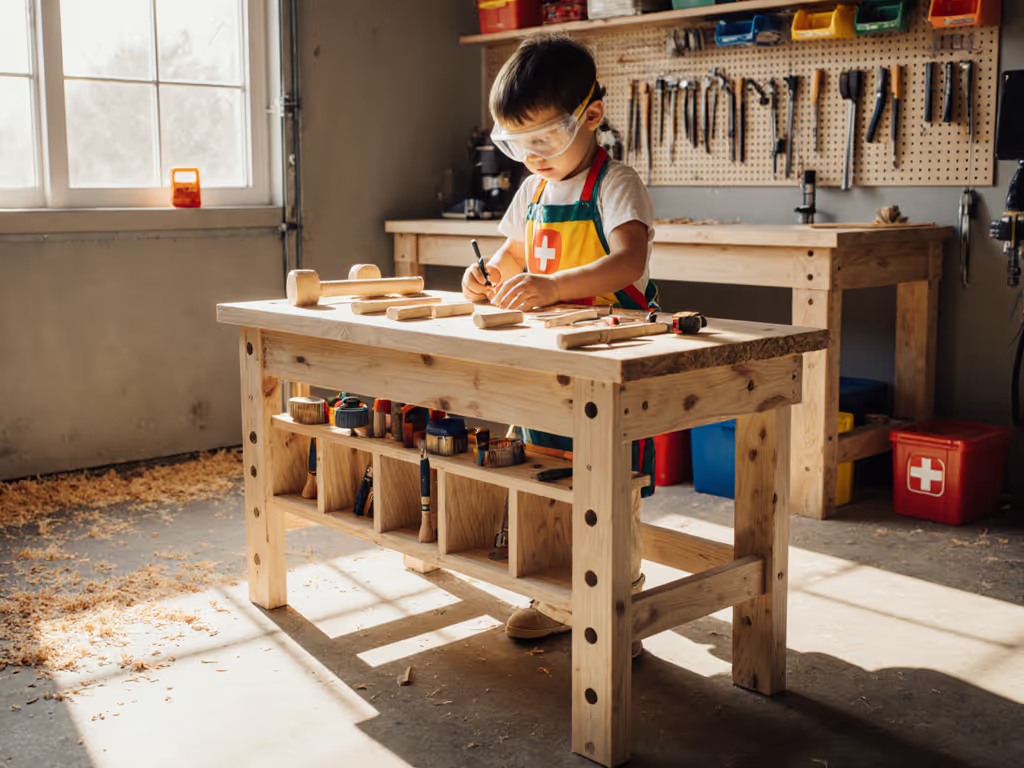
Building a proper woodworking workbench for kids isn't just about providing a surface, it is about creating a growth platform where safety, capability, and confidence develop together. As parents and educators increasingly recognize the value of teaching woodworking to kids, the right childrens wooden workbench becomes the foundation for years of skill development. When you're working to build woodworking workbench solutions for young makers, your approach should prioritize modularity and safety without compromising on the authentic experience that builds real craftsmanship. I've learned through years of helping small shops optimize their setups that true value comes from capability over time, not just the initial purchase price.
1. The Critical Safety Foundation for Youth Woodworking
Before even considering bench design, you must establish non-negotiable safety protocols. Reviewing the Head Start of Lane County's woodworking guidelines reveals consistent patterns: properly sized tools, mandatory eye protection, and strict adult supervision for every activity. My own experience teaching neighborhood kids in my garage workshop taught me something valuable: a child's safety isn't just about equipment, but about building systems that prevent mistakes before they happen.
Start lean, add interfaces, and compound the capability.
For children's wooden workbenches, this means:
- Age-appropriate work height: Younger children (4-7 years) need bench heights between 18-22 inches, while 8-12 year olds typically require 24-28 inches
- Stable workholding: Hands should never hold workpieces during cutting, use clamps or vises exclusively
- Tool selection: Start with 1.5" roofing nails (wider head for safer hammering) and fine-toothed saws with 12+ TPI
- Work area boundaries: Only 1-2 children at the bench at a time with clear walking zones
The most often overlooked safety element is the work surface itself. For detailed sizing based on child height and task type, see our workbench height guide. Many parents repurpose standard adult benches without considering that a child's shorter reach creates dangerous overreaching scenarios. A proper youth woodworking station should eliminate the need for stools, which the Woodworking Safety Institute identifies as a leading cause of workshop falls among children.
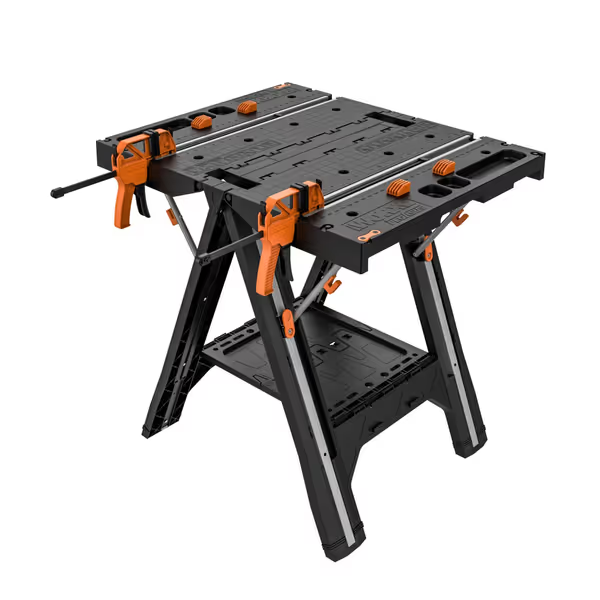
WORX Pegasus 2-in-1 Folding Work Table & Sawhorse
2. Height Adjustability: The Most Overlooked Growth Factor
When evaluating options to build woodworking workbench solutions for developing children, height adjustability is the single most important feature affecting both safety and capability. Unlike adults whose height stabilizes, children gain 2-3 inches annually during growth spurts, meaning a bench that fits perfectly at age 6 may create dangerous posture issues by age 8.
Rather than buying multiple benches over the years, a modularity-minded approach delivers better cost-per-capability:
- Fixed-height benches: Best for short-term use (under 18 months) or for schools with multiple age groups rotating through stations
- Incremental height systems: Bench legs with multiple mounting holes allowing 2-3 height adjustments (ideal for home use)
- Continuous adjustment: Bench systems with telescoping legs or modular bases (highest initial cost but longest useful life)
The Worx Pegasus 2-in-1 Folding Work Table stands out as an often-overlooked solution for growing kids. At 32" height, it's initially too tall for children under 10, but its folding design allows creative height modification. Mount it on stable concrete blocks (2" for ages 6-8, 4" for ages 9-12) to create an adjustable foundation that costs pennies per inch of adjustment.
This cost-per-capability calculation reveals why temporary adaptations beat buying multiple benches:
- Initial bench purchase: $129.99
- Concrete block height adjustment kit: $8
- Effective lifespan: 6+ years (vs. 2 years for fixed-height children's benches)
- Cost per year: $23.16 vs. $65+ for traditional children's benches
Look for benches with stable bases that accommodate these modifications, because wobble is the enemy of child safety as it causes unexpected slips during critical moments like hammer strikes.
3. Workholding Solutions for Small Hands
One of the most dangerous aspects of childrens wooden workbench setups? Children attempting to hold workpieces with their hands while using tools. My garage workshop learning curve included too many close calls until I implemented a simple rule: if it requires two hands to cut or hammer, it requires secure workholding.
Consider these statistics from the North American Tool Safety Council:
- 73% of children's workshop injuries occur during cutting/sawing operations
- 68% of those involve fingers near the cutting line
- 92% happen when children are attempting to hold the workpiece with their off-hand
The MICROJIG MatchFit Grr-rip Clamps solve this problem elegantly for growing workshops. With 150 lbs of clamping force activated by one-handed squeeze action, they provide the security children need without requiring adult-level hand strength. The anti-mar pads protect delicate projects while the dovetail/T-track compatibility means they'll work with your existing bench system, whether it's a dedicated youth woodworking station or a modified adult bench.
In my experience teaching woodworking to kids, these clamps deliver exceptional parts sourcing clarity because they work with standard dovetail grooves (1/2" x 14°) found on many quality benches. The quick-release trigger is particularly valuable for children who might panic and freeze when working with traditional clamps. If you're exploring broader workholding upgrades like bench dogs and hold-downs, see our workbench add-ons guide.
Key advantages for children's workbenches:
- One-handed operation: Critical for children who lack the coordination to tighten traditional clamps while positioning workpieces
- Visual confirmation: The bright yellow color makes them easy for children to locate and identify as safety equipment
- Gentle grip: Anti-mar pads prevent damage to softwoods like pine that children typically use
- Growth path: They'll work equally well on the child's first bench and their professional setup years later
When planning your childrens wooden workbench system, prioritize these workholding fundamentals:
- Minimum of two clamping points at any work location
- Clamp positions that keep fingers at least 3 inches from cutting lines
- Workholding that doesn't require tools to adjust (quick-release mechanisms)
4. Material Matters: Indoor vs. Outdoor Considerations
Children's workbenches face unique challenges: spills, weather exposure if used outdoors, and frequent repositioning. When evaluating options to build woodworking workbench solutions, don't default to standard plywood tops that swell and warp with moisture exposure.
For outdoor youth woodworking stations (a great option for schools and camps), consider these material factors: If humidity or coastal air is a concern, our climate-proof workbench guide explains material choices and maintenance.
- Moisture resistance: ABS plastic surfaces (like the Worx Pegasus) won't warp but lack the traditional "woodworking feel"
- Surface durability: Coated steel tops resist dents but create dangerous tool bounces
- Natural wood options: Cedar or treated pine provides authentic feel but requires regular maintenance
My own shared garage experience taught me that a torsion box construction with marine-grade plywood facing offers the best compromise for indoor/outdoor hybrid use. The Worx Pegasus takes a different approach with its molded ABS plastic surface, which, while not traditional, delivers remarkable moisture resistance at a fraction of the cost of custom builds.
For permanent outdoor youth woodworking stations, I recommend applying a two-part system:
- First, use wood preserver to prevent mold and rot
- Follow with decking oil to protect against water damage
This process maintains the wood's natural appearance while providing years of protection, which is critical when your childrens wooden workbench needs to withstand seasonal changes.
5. The Modular Growth Path: Bench as a Platform
Most parents make the mistake of viewing a childrens wooden workbench as a disposable item they'll outgrow. Instead, approach it as your first investment in a lifelong woodworking system. My own journey began with a simple torsion box that evolved through multiple phases as my skills and space allowed.
Your no-fluff purchasing strategy should follow this progression:
Phase 1: Foundation (Ages 4-8)
- Core bench: Lightweight, portable system like the Worx Pegasus ($129.99)
- Safety add-ons: Integrated clamps and dogs (included with Pegasus)
- Height mods: Concrete blocks or adjustable legs
- Total cost: $129.99
Phase 2: Capability (Ages 9-12)
- Same bench core
- Add-on: MICROJIG MatchFit Grr-rip Clamps ($39) for precision workholding
- Optional: Attach to stationary base with casters for stability
- Total cost: $168.99
Phase 3: Professional (Ages 13+)
- Same bench core
- Upgrade: Add dedicated vise system (compatible with existing frame)
- Add specialized workholding: Stop blocks, planing aids
- Total cost: $250-$300 (vs. $500+ for new bench)
This incremental approach delivers better value through the years. Rather than paying $200 for a "kid bench" that gets discarded in 3 years, you've created a platform that grows with your child's skills. The Worx Pegasus system shines here with its seamless transition from workbench to sawhorse, perfect when your child outgrows the initial configuration but still needs portable work surfaces.
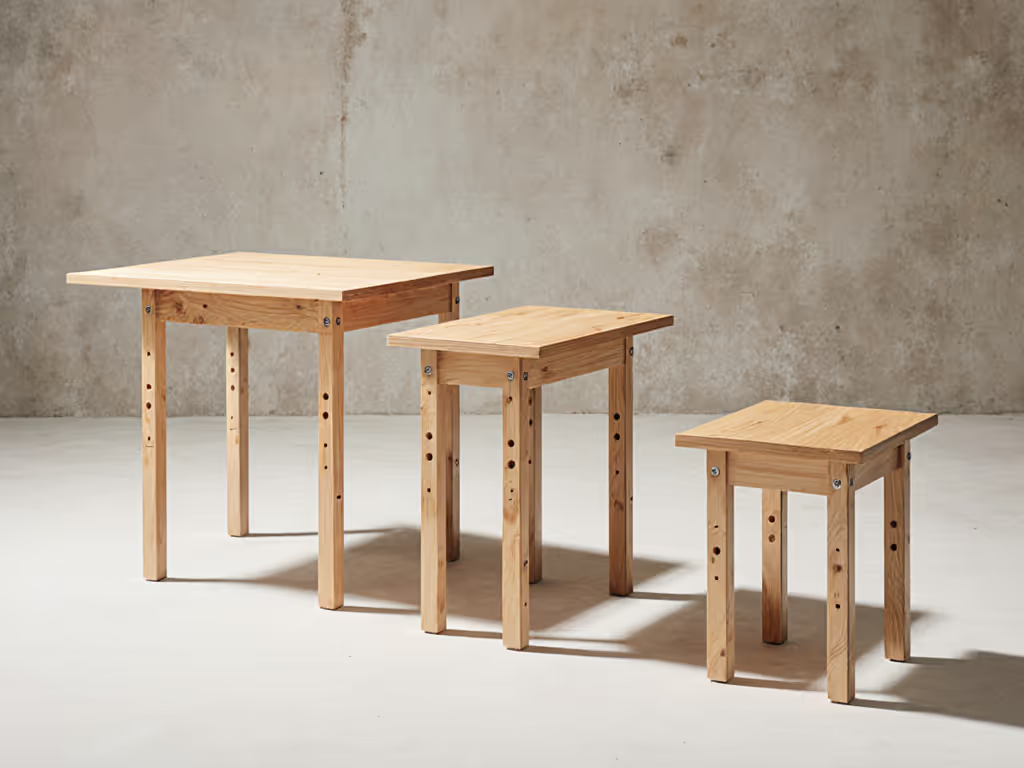
6. The DIY Dilemma: Build vs. Buy Analysis
Many skilled parents consider building a custom childrens wooden workbench. While this can be rewarding, the hidden costs often surprise even experienced woodworkers. Let's break down the true cost-per-capability:
Custom Build (Estimated)
- Materials: $120-$180 (2x4s, plywood, hardware)
- Time investment: 8-12 hours (vs. immediate use of purchased bench)
- Skill requirements: Intermediate woodworking ability
- Growth limitations: Fixed height, typically lacks modular upgrade paths
- True cost: $200-$300 when valuing time at $10/hour
Purchased System (Worx Pegasus)
- Initial cost: $129.99 (on sale from $159.99)
- Setup time: 5 minutes
- Skill required: None
- Growth potential: High (as detailed in Phase system above)
- True cost: $129.99 + minimal time investment
For most families, the purchased system delivers better immediate value. However, if you're already building your own workshop and have the skills, consider a hybrid approach: build a simple base frame that accepts modular tops like the Worx system. This creates a permanent youth woodworking station that can later integrate professional workholding systems.
7. Safety Integration Checklist
Don't just buy a bench, build a safety ecosystem. Use this checklist when establishing your teaching woodworking environment for kids:
- Tool height check: All cutting surfaces must be below child's elbow height when standing properly
- Clear zone: Minimum 3-foot radius around bench with no tripping hazards
- Clamp verification: Every workpiece must be secured with at least two contact points
- Sight lines: Adult supervisor must have unobstructed view of all tool operations
- Emergency access: Clear path to first aid and emergency shutoffs
- Tool storage: All tools returned to designated spot after use, never left on bench
This systems approach reflects what I've learned from years of optimizing shop setups: safety isn't an add-on, but the foundation of capability. For a deeper checklist of workbench safety features that prevent accidents, explore our dedicated guide. When children develop habits on a properly configured youth woodworking station, they build confidence that translates to better technique and fewer accidents.
Start Your Children's Woodworking Journey Right
The right childrens wooden workbench isn't about finding the perfect piece of furniture, it is about establishing a growth platform where safety, capability, and confidence compound over time. Your first investment should enable future upgrades without requiring complete replacement.
Take action today:
- Measure your child's current work height (elbow height when standing)
- Choose between the Worx Pegasus (best portable solution) or a customizable base for future growth
- Add the MICROJIG MatchFit Grr-rip Clamps immediately, they'll grow with your child's skills
Remember that powerful workshop lesson I learned in my shared garage: you don't need the most expensive equipment to build meaningful skills. Start with what fits your current needs and budget, then strategically add interfaces that expand capability. With the right approach, your childrens wooden workbench becomes the first step in a lifelong journey of craftsmanship, not just another piece of equipment that gets outgrown.

